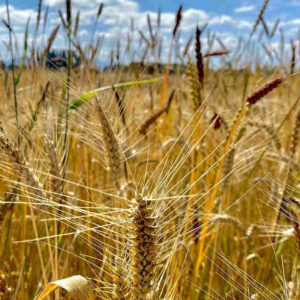I first learned about the WSU Bread Lab when reading Dan Barber’s The Third Plate. The bread lab is a research lab focused on wheat, barley and rye, outside of the commodity system that dominates these crops. They bring together farmers, bakers, flour mills, and plant breeders. Amongst their goals is to develop grain varieties that are better for the soil and farming, better tasting, and more nutritious. One of their goals is to introduce affordability into regional food systems.
Last week they posted some ponderings about the wheat production and consumption in the United States. There is some simple math with some very large numbers. There are interesting facts, and interesting questions. To me, it was 100% Thought 4 Food. I got permission to reproduce the post, and list it below. If you want to see the original post, it is here.
Tuesday Math
Washington State produces: 10,000,000,000 lbs. of wheat/year
Americans eat: 1/3 lb. of wheat flour/day
WA pop: 7,500,000
Each year WA produces enough wheat to feed everyone in the state their servings of wheat for 4,000 days—about 11 years.
Those numbers are whole wheat flour. If that wheat is turned into white flour then 2,500,000,000 lbs. gets pulled off for non-human uses. That wheat would then feed 7,500,000 people for 3,000 days—a little over 8 years. Significantly less but still a lot of food. And a hell of a lot of missed-opportunity bran.
A year ago you could not find flour in the stores here. There was no shortage of wheat or flour. There was a shortage of 5-pound bags and a shortage of planning and an extreme lack of adaptability and ability to make connections not already built into a very tight system. The result was a lack of access to flour for bakers that just wanted some (any) flour to feed their families.
The system here is designed for 90% or more of the wheat in our state to leave the country.
That still leaves 1,000,000,000 lbs. that stays. Enough for all 7,500,000 in the state for over 1 year.
Let’s say a local flour mill can make 10,000,000 lbs. per year. One hundred of that size would fulfill the state’s flour needs. Could this flour become “everyday flour”? Should it? What would it cost? In 1870 there were about 25,000 flour mills in the US. Quite a decentralized system. In current US dollars flour went for 30¢ to 40¢ per pound in 1870. Today in the US there are around 200 mills, 20 of those make 90% of our flour. You can buy flour today retail from 40¢ to $4.00 and up per pound.
Do we want to eat wheat that we produce in our own state? Can it be affordable? Is it easily accessible by all? What are the priorities of those who grow and process our food? What type of grain system do we want? A hybrid of local, regional and national? What is regional or local? Who does it benefit? At what scale is replicability applicable? How big should one get, or how small should one stay?
We don’t know all the answers.
Heck, we don’t know all the questions.

